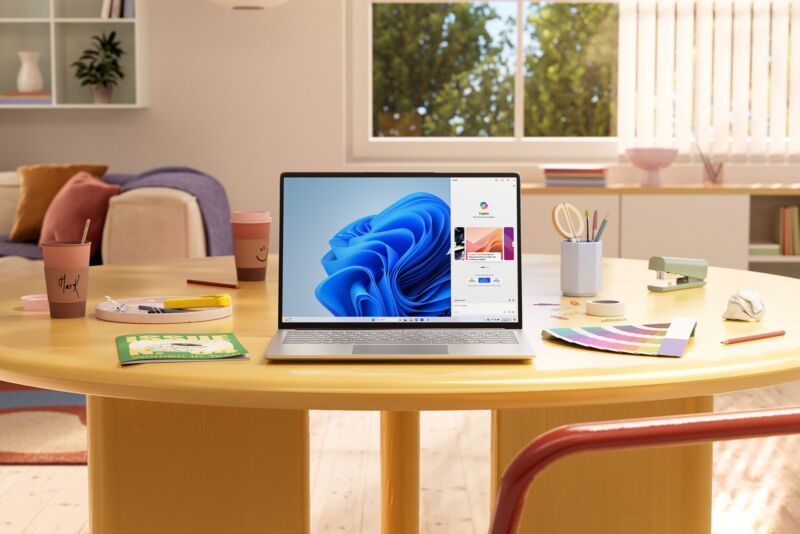
Microsoft
For the third year running, Microsoft is releasing a batch of small- to medium-sized Windows 11 updates in February. This year’s collection of tweaks includes the now-obligatory smattering of generative AI features, but also some window-snapping changes, better Android phone integration, and accessibility upgrades, among other things.
Starting with the non-AI features: If you’ve paired an Android phone with your PC in the Your Phone app, Microsoft says that “soon” you will be able to use the phone’s camera as a webcam during video calls. This mirrors a similar Mac-to-iPhone feature that Apple added to macOS a couple of years ago; though most PCs these days are sold with webcams, the camera on any reasonably recent Android phone will be a visual upgrade.
Window snapping is getting some “intelligent suggestions” that Microsoft says will “help you quickly organize open apps based on how you use them.” And the Widgets view gets a new “focused” view and subcategories that will let you easily switch between widget boards if you want different widgets for different contexts (one for home and one for work, for example).
The AI tweaks mostly involve upgrades to Copilot, the still-in-preview chatbot that made it into Windows’ taskbar last year. Copilot’s promised support for third-party plugins is arriving—the first wave revolves around mostly gimmicky shopping and travel plugins from OpenTable, Instacart, Kayak, Shopify, and Klarna, plus “a growing list” of other unspecified services.
The chatbot can also view and change a handful of other Windows settings, like toggling the battery saver, launching most of the operating system’s built-in accessibility tools, and showing information about networking and available storage space. All of these functions will be available “beginning in late March.”
Somewhat more interestingly, Microsoft has also enhanced Windows’ image editing capabilities, adding a “generative erase” feature to the Photos app that can be used to fill in a photo after you’ve removed part of it. The Clipchamp video editor is also getting a silence removal feature; though, like Copilot, this is being labeled as a preview.
On the accessibility front, the most significant change is support for Voice Shortcuts, which allow you to create custom voice commands to perform specific tasks or simulate keyboard and mouse input. Voice commands will also work across multiple displays.
Microsoft says the updates are available to any PCs running Windows 11 versions 22H2 or 23H2—they’ll roll out gradually, but “many” of them should be available through Microsoft Store updates or by manually installing optional updates through the Windows Update screen in Settings. The features should automatically roll out to all Windows 11 PCs by sometime in April.
This batch of updates is separate from the more significant Windows 11 24H2 update that Microsoft began testing earlier this month. That update appears to contain some more substantial under-the-hood improvements, including 80 Gbps USB4 support, a refreshed setup process for doing clean installs from a USB drive, and a version of the Linux/Unix Sudo terminal command for Windows. These updates could come out before 24H2 does, but signs point to it being a more significant change than the low-key 23H2 update was.




















+ There are no comments
Add yours